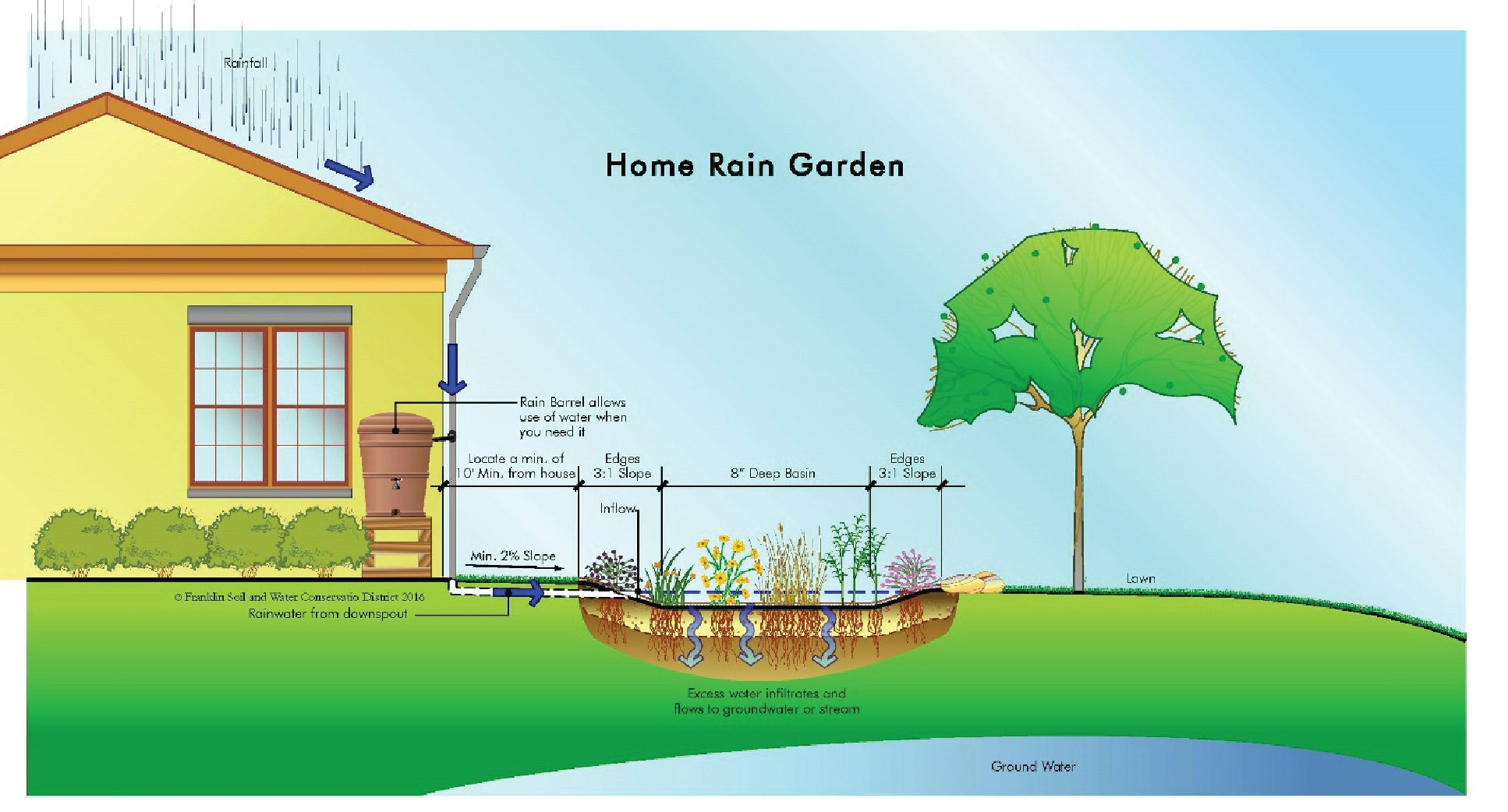Rain Garden

Building Your Rain Garden
Creating a rain garden is surprisingly easy and the result can be quite attractive. It will reduce outdoor water use easily and effectively, and is a good example of the “watershed approach” to landscaping.
Under this approach, a yard becomes a mini watershed: the rain falls in the mountains (roof), where it collects in streams (gutters), and flows (through downspouts) to the valleys below (garden). There it will nourish trees and plants, instead of being lost to runoff.
Place the rain garden at least ten feet away from building foundations and neighbors. A sunny location, and one without tree roots, is ideal. Dig a trench from your downspout to the rain garden for the water to flow.

A rain garden should be big enough to catch at least the first inch of rainfall. Known as the “first flush,” this contains the majority of harmful pollutants.
Here is how to design your own rain garden to capture and retain that first flush:
Capture First Flush and Plan to Detain the RainIn the bottom of your rain garden, select plants that don’t mind being flooded for a few days after a storm. On the sides, place plants that prefer less wet soil:
Contours Capture RainFor more information about the watershed approach to landscaping, check out Surfrider’s Ocean Friendly Gardens program.
Plants for a rain garden are adapted to both wet and dry conditions. At the bottom of the basin, use plants that can sit in water for several days such as Rushes, Sedges and Yerba Mansa. On the sides and around the perimeter berms, you can place flowering plants that don’t mind having their roots in wet soil temporarily such as Columbine or Ground Morning Glory.
Below you will find a list with photos and a diagram of the Rain Garden. The Sustainability Garden is always changing and though District staff will be updating the garden diagrams regularly customers may find a plant out of place in the garden compared to the diagram. if you are looking for a particular plant, let us know and we will work to get you the information you need.
Rain Garden DiagramRain Garden Plant List